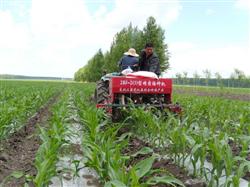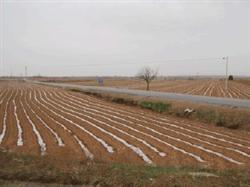Conservation Tillage techniques of Spring Maize

Technical introduction: this technology is an advanced agricultural farming technology, through the implementation of no-tillage application of straw to cover the surface, reduce soil wind erosion, water erosion, and improve soil fertility and drought resistance. Core technology: ① straw mulching technology, straw and stubble left on the ground after corn harvest as mulch to reduce soil erosion and restrain sand blowing; ② no-tillage fertilization and sowing technology, using no-tillage seeder to fertilize and sow directly on uncultivated farmland; ③ chemical weeding technology, adopting soil closure after sowing and directional weeding. ④ deep loosening technology, conservation tillage mainly depends on crop roots and earthworms and other biological loosening, but because the mechanical work compacts the ground, the soil needs to be loosened, generally using special machinery once every 3-4 years. Ecological benefits: reduce surface runoff by 60%, soil water erosion by 80%, reduce wind erosion by 60%, reduce air pollution by not burning straw, increase soil water storage by 14-15%, increase water use efficiency by 15-17%, increase soil fertility, increase soil organic matter by 0.03%, and effectively restrain sandstorms. Economic benefits: reduce production costs; increase corn output by 5-13%; increase income by 8-15%. Social benefits: reduce the working procedure of agricultural machinery, reduce the labor intensity, and improve the quality of life of farmers.
- Prev

Soil testing and Formula fertilization Technology for Spring Maize
First, select suitable varieties. The suitable superior varieties should be selected according to local conditions, and the middle and late maturing varieties with a growth period of 120-130 days should be selected according to the heat resources and production practice. The main spring maize varieties with outstanding comprehensive characters are Nongda 108 and so on. Second, fine soil preparation. Spring corn requires deep ploughing, and autumn ploughing is earlier.
- Next

Drought-resistant cultivation techniques of Spring sowing Maize
In recent years, with the increase of the area of spring sowing corn, maize dwarf mosaic virus has become the main disease of spring sowing maize. First, symptom identification: maize dwarf mosaic virus disease is susceptible in the whole growing period of maize, especially in the seedling stage. The disease can be seen in the three-leaf stage of corn, at first.
Related
- The first cup of black tea in spring, the flavor and history of tea gardens in Kenya, Africa
- The computer can not only choose potatoes, but also grow tea rice. AI will grow winter oolong tea champion.
- It is not only the inflated tea bitten by insects, but also engraved with the four seasons tea in Beipu.
- The Oriental Beauty Tea Festival in Zhuxian County takes the stage at the weekend to experience the plus-size feast of oil tea.
- & quot; Oriental Beauty Tea & Exploration of Emei in Hsinchu, the hometown of quot;
- The new variety of strawberry "Tainong 1" dessert is the first choice with mellow aroma. Crimson gorgeous
- History of Tea in Taiwan: from Wild Inner Mountain to Export Tea Garden
- Two types of Taiwan Oriental Beauty Black Tea won the British three-Star Award for Childhood Tea Xiang Zhang Jiaqi changed from pilot to champion tea maker.
- Banana species and varieties: the planting history of Taiwan Xianren banana and dwarf banana is long, is banana disease resistant?
- Coffee planting Technology: Qianjie Coffee from Seedling to harvesting

